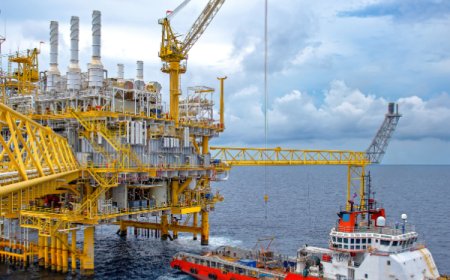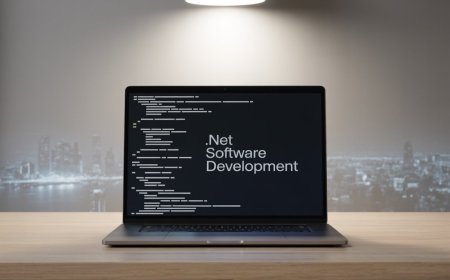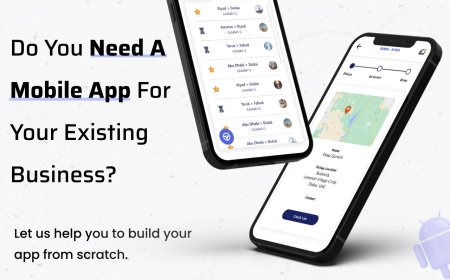How UAE Climate Impacts Outdoor Workforce Attendance — And the Digital Solutions That Solve It
Discover how UAE’s extreme climate affects outdoor worker attendance and the digital time attendance solutions that keep construction and field teams safe and productive.

Introduction
Managing an outdoor workforce in the Gulf is uniquely challenging. A robust Time Attendance Solution in UAE is indispensable when scorching summers, sandstorms, and sudden downpours can disrupt shifts in minutes. By aligning scheduling, safety, and real-time climate data, employers can protect their people and maintain productivityeven when Mother Nature tests the limits.
Understanding the UAE Climate
Extreme Heat and Humidity
From May to September, daytime temperatures routinely exceed 45?C, with humidity pushing real-feel indices even higher. Prolonged exposure raises the risk of heatstroke, forcing work stoppages or staggered shifts. High humidity levels also affect machinery and electronics, creating risks for both labor and operational continuity.
Sandstorms and Dust
Seasonal shamal winds whip up sand and dust that reduce visibility, clog machinery, and create respiratory hazards. Projects near deserts or undeveloped land face frequent disruptions. Sandstorms can cause damage to outdoor attendance devices, reduce line-of-sight for surveillance, and force crews indoors without notice.
Sudden Rain and Flash Flooding
While rainfall is sparse, short cloudbursts can overwhelm drainage systems, flooding sites and making it unsafe for crews to remain outdoors. These weather events often occur without sufficient warning, highlighting the need for fast, responsive shift management systems.
Impact on Outdoor Workforce Attendance
Heat Stress and Absenteeism
Chronic heat stress causes weariness, thirst, and disease in workers, which raises absenteeism. Without flexible clock-in options, employers struggle to validate legitimate climate-related absences. Inconsistent attendance logs may lead to payroll errors and lowered morale.
Shift Disruptions During Sandstorms
Visibility drops below safe thresholds during severe sandstorms. Crews must shelter or evacuate, causing unexpected early clock-outs that complicate payroll and project timelines. Without automated systems, HR may struggle to manually correct or justify shift changes.
Regulatory Work Stoppages
UAE labor regulations mandate midday breaks in peak summer. Failure to comply can incur penalties. Tracking these mandated pauses manually is error-prone and time-consuming. For large-scale projects, manual enforcement becomes inefficient and unreliable.
Digital Solutions to Climate Challenges
Digital transformation provides reliable answers to the UAEs climate-related attendance issues. Intelligent attendance solutions allow businesses to take a proactive approach to both safety and time tracking.
1. Real-Time Environmental Monitoring
IoT weather stations and official meteorological feeds are integrated into contemporary attendance systems. When heat indices breach preset limits, the system can automatically notify supervisors and suggest break windows. These alerts can be programmed by zone, shift, or role, helping keep site operations efficient while staying compliant.
2. Adaptive Scheduling and Alerts
Machine-learning algorithms analyze historical climate patterns to build heat-aware rosters: earlier start times, compressed schedules, or night shifts. Automatic SMS and push notifications keep teams updated. For instance, a forecasted 48?C day may trigger a rotation schedule or reschedule heavy labor.
3. Geofenced Mobile Clock-Ins
GPS-enabled mobile apps allow crews to clock in from a safe zone rather than a fixed terminal. Geofencing ensures accuracy while eliminating risky treks across scorching sites just to tap a reader. This mobility is particularly valuable in multi-site or linear infrastructure projects.
4. Ruggedized Biometric Terminals
Where fixed points are required, industrial-grade fingerprint or facial scanners with IP65 ratings withstand dust, moisture, and temperature extremes, ensuring uptime even during harsh weather. These terminals are especially useful in remote locations where mobile signals may be weak.
5. Predictive Absence Analytics
Attendance data combined with climate records uncovers correlations between heat spikes and absenteeism. HR can proactively deploy rest tents, hydration stations, or rotate staff before productivity dips. This data-driven strategy helps companies stay one step ahead of environmental stressors.
Case Example: A Coastal Construction Project
A civil engineering firm building a waterfront marina faced delays every August. After deploying a climate-aware attendance system:
-
Heat alarms activated break rotations when the temperature rose above 42C.
-
Mobile clock-ins reduced exposure time by 18?minutes per worker per day.
-
Predictive schedules shifted 30% of heavy labor to cooler dawn hours.
-
Real-time alerts allowed project managers to reroute manpower during sudden showers.
The project finished on time, and heat-related sick days fell by 35% in one season. The team reported higher morale, lower turnover, and better compliance with safety mandates.
Implementation Best Practices
Engage All Stakeholders
Success requires buy-in from HSE officers, site managers, and payroll teams. Workshops ensure climate triggers align with safety policies. Collaborative planning helps maximize system efficiency.
Integrate With Payroll and Safety Systems
Seamless data flow prevents duplicate entry. Automated break deductions and hazard allowances reflect actual site conditions. Integration with HRMS ensures accurate salary calculation and policy enforcement.
Train the Workforce
Trust and compliance are increased by providing examples of how to use mobile apps, comprehend climate notifications, and record valid absences due to weather. Regular refresher sessions can help reduce errors and maximize adoption.
Audit and Adjust
Conduct quarterly reviews of attendance vs. weather records to adjust protocols. For example, extending shaded areas or modifying workwear based on seasonal insights can improve safety outcomes and attendance regularity.
Conclusion
The UAE climate presents real challenges for outdoor operations, but they are not insurmountable. Pairing on-site safety protocols with a climate-responsive Time Attendance Solution in UAE empowers businesses to safeguard employees, satisfy regulators, and keep projects on trackno matter how high the mercury rises or how fierce the desert winds blow.
By integrating digital timekeeping tools designed for harsh weather realities, companies build not only operational resilience but also a culture of safety, trust, and innovation. With forward-thinking attendance strategies, UAEs outdoor workforce can thriveeven in the heat of summer.












































